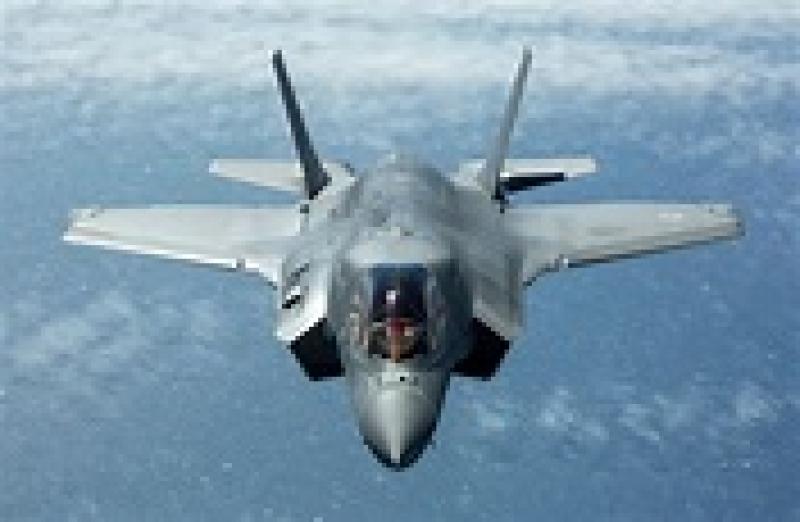Most US F-35s temporarily grounded as ejection seat issue threatens jets worldwide
By: Rachel Cohen (Military Times)



Editor's note: This story was updated at 8:52 p.m. on July 29, 2022, with more information from the ejection seat manufacturer and the U.S. military.
The U.S. military discovered a problem with the ejection seats used across its F-35 Joint Strike Fighter fleet in April, but waited three months to ground those aircraft flown by the Air Force, Navy and Marine Corps to fully investigate the issue, multiple sources told Air Force Times Friday.
Officials initially saw the problem as a potentially isolated incident. But an ongoing investigation sourced the issue to the production line, prompting waves of temporary stand-downs this week.
"During a routine maintenance inspection at Hill [Air Force Base, Utah,] in April '22, an anomaly was discovered with one of the seat cartridge actuated devices in the F-35 seat," Steve Roberts, a spokesperson for seat manufacturer Martin-Baker, said Friday. "This was quickly traced back to a gap in the manufacturing process, which was addressed and changed."
Cartridges are the ejection seat component that explode to propel an aviator out of the cockpit and prompts their parachute to open. The defective part was loose and missing the magnesium powder used to ignite the propellant that shoots someone to safety, Roberts said.
A maintainer inspecting an F-35 found that an ejection cartridge felt suspiciously light, according to an unconfirmed summary of a briefing within the Air Force's Air Education and Training Command obtained by Air Force Times. After a closer look, the cartridge turned out to be missing its explosive charge that would lift someone to safety.
The military tested 2,700 F-35 ejection seat cartridges and discovered three failures as of Wednesday, the briefing summary said. Service officials declined to confirm or deny the summary's narrative of events.
Roberts said the problem was unique to a particular cartridge number and to the F-35, but did not answer how many defective parts have turned up so far. The U.S.-led Joint Strike Fighter program conducted a "short inspection" and determined that the jets could return to flight, he said.
"Martin-Baker has been providing the [prime aircraft contractors like Lockheed Martin] and multiple [government] agencies with supporting data to prove that all other aircraft may be excluded," Roberts said. "Outside the F-35, not a single anomaly has been discovered worldwide as a result of the forensic investigation which continues at pace."
A majority of the Air Force's F-35A Lightning II fleet on Friday became the latest to stand down amid concerns about Martin-Baker ejections seats on a wide range of military aircraft at home and abroad.
Air Combat Command spokesperson Alexi Worley confirmed that the first faulty cartridge was found during a routine inspection in April. The military immediately inspected additional aircraft, she said, and halted its investigation when Martin-Baker discovered a quality-assurance failure on its production line.
The F-35 Joint Program Office then issued a "routine" directive, known as a time compliance technical order, that mandated inspection of all ejection seat cartridges within 90 days starting July 19. Ten days later, Air Combat Command grounded its F-35s to speed up those checks, Worley said.
ACC aims to finish looking at the seats within 90 days, or by mid-October, Worley said in a statement first reported by Breaking Defense on Friday. Each plane can return to regular flights once it passes inspection.
"The stand-down of aircraft will continue through the weekend, and a determination to safely resume normal operations is expected to be made early next week, pending analysis of the inspection data," Worley told Air Force Times.
Though ACC owns most of the Air Force's more than 300 F-35As, some are managed by other major commands like U.S. Air Forces in Europe and Pacific Air Forces. Command spokespeople did not respond to emailed queries Friday.
Air Education and Training Command also paused its F-35 operations on Friday "to allow our logistics team to further analyze the issue and expedite the inspection process," spokesperson Capt. Lauren Woods told Breaking Defense. AETC oversees F-35 training units at Luke Air Force Base, Arizona, and Eglin AFB, Florida.
"Based on the results of these inspections and in conjunction with ACC, the lead command for F-35, AETC will make a decision regarding continued operations," Woods said.
The Navy and Marine Corps have also stopped flying F-35B and F-35C jets while investigations are ongoing. Each aircraft will be inspected before its next flight rather than in batches over three months.
"All inspections are being conducted in an expedited manner with a high priority," F-35 Joint Program Office spokesperson Chief Petty Officer Matthew Olay said Friday.
Naval Air Systems Command has declined to say how many aircraft are affected, citing operational security concerns. It began shipping replacement parts to its own maintenance centers with planes affected by the problem on July 24.
The issue "only affects aircraft equipped with [cartridge actuated devices] within a limited range of lot numbers," the service said in a statement.
Military and company officials declined to say how many cartridges were produced as part of the defective lots. The Navy said no one has died or been injured because of the defect; the Air Force has stressed its groundings are a precaution to get ahead of any fatalities.
On Wednesday, the Air Force temporarily stood down its T-38 Talon and T-6 Texan II training aircraft due to the same ejection seat worries. Most were slated to returned to service on Friday, but nearly 300 aircraft that may be affected by faulty cartridges will remain on the ground. That comprises about 40% of the T-38 fleet and 15% of the T-6 fleet, including planes at each undergraduate pilot training base and Naval Air Station Pensacola, Florida.
The T-38 is a supersonic jet used to prepare pilots to fly fighter and bomber aircraft, and the T-6 is the service's turboprop plane used to teach basic flight skills. Each aircraft contains multiple explosive cartridges so pilots have backup options if one charge fails.
It's unclear how taking a significant portion of Air Force trainers out of commission will affect the service's ability to graduate new pilots amid an enduring shortage of about 1,600 airmen, particularly in the fighter community. The Air Force produces about 1,300 new pilots a year.
"Our primary concern is the safety of our airmen and it is imperative that they have confidence in our equipment," Nineteenth Air Force boss Maj. Gen. Craig Wills, who runs an organization responsible for the service's training enterprise, told Air Force Times in an emailed statement. "Our actions … were taken out of an abundance of caution in order to ensure the safety of our pilots and aircrew."
Several aircraft fleets across the Defense Department that use Martin-Baker ejection seats — from the T-38s and T-6s to the Navy's F/A-18B/C/D Hornet and F/A-18E/F Super Hornet fighter jets, E/A-18G Growler electronic attack plane, and T-45 Goshawk and F-5 Tiger II trainers — are on hold while the military digs into the problem. The issue may also affect European airframes like the Eurofighter Typhoon and Dassault Rafale and aircraft flown by Turkey and South Korea.
The U.K. Royal Air Force also stopped "non-essential" flights for its Red Arrows jets and Typhoon warplanes over safety concerns with its ejection seats, the Daily Mail reported. NATO's Allied Air Command did not respond to queries emailed Friday about the potential impact on the international fighter enterprise.
F-35 Joint Strike Fighters are the Pentagon's premier fighter jet flown by the Air Force, Navy and Marine Corps, plus more than a dozen foreign countries that have ordered or received them. In April, the Government Accountability Office reported it will cost more than $1.7 trillion for the Pentagon to buy, operate and maintain the jets in the U.S.
Lockheed Martin plans to build more than 3,000 F-35s for militaries around the globe. More than 800 planes have been delivered so far over the past 15 years, over half of which belong to the U.S.
Joint Strike Fighters were last publicly grounded in South Korea in January after one of the country's jets malfunctioned and landed on its belly. Before that, the U.S. grounded all of its F-35s worldwide over fuel tube problems, among a slew of other software and hardware hurdles to the fleet's rollout.
The same day as the military began probing its ejection seats in earnest, Bloomberg reported some F-35s could be grounded for a separate problem: an enduring shortage of working engines.
Nine percent of F-35s weren't operational in mid-2020, GAO said in a July 19 report.
"DOD's strategy allows 6% of F-35s to be unavailable for missions at any given time due to engine issues," the federal watchdog wrote. "But the number of F-35s that this leaves available for operations isn't what the military services consider to be sufficient … in part because its strategy doesn't ensure enough spare engine parts are available."






